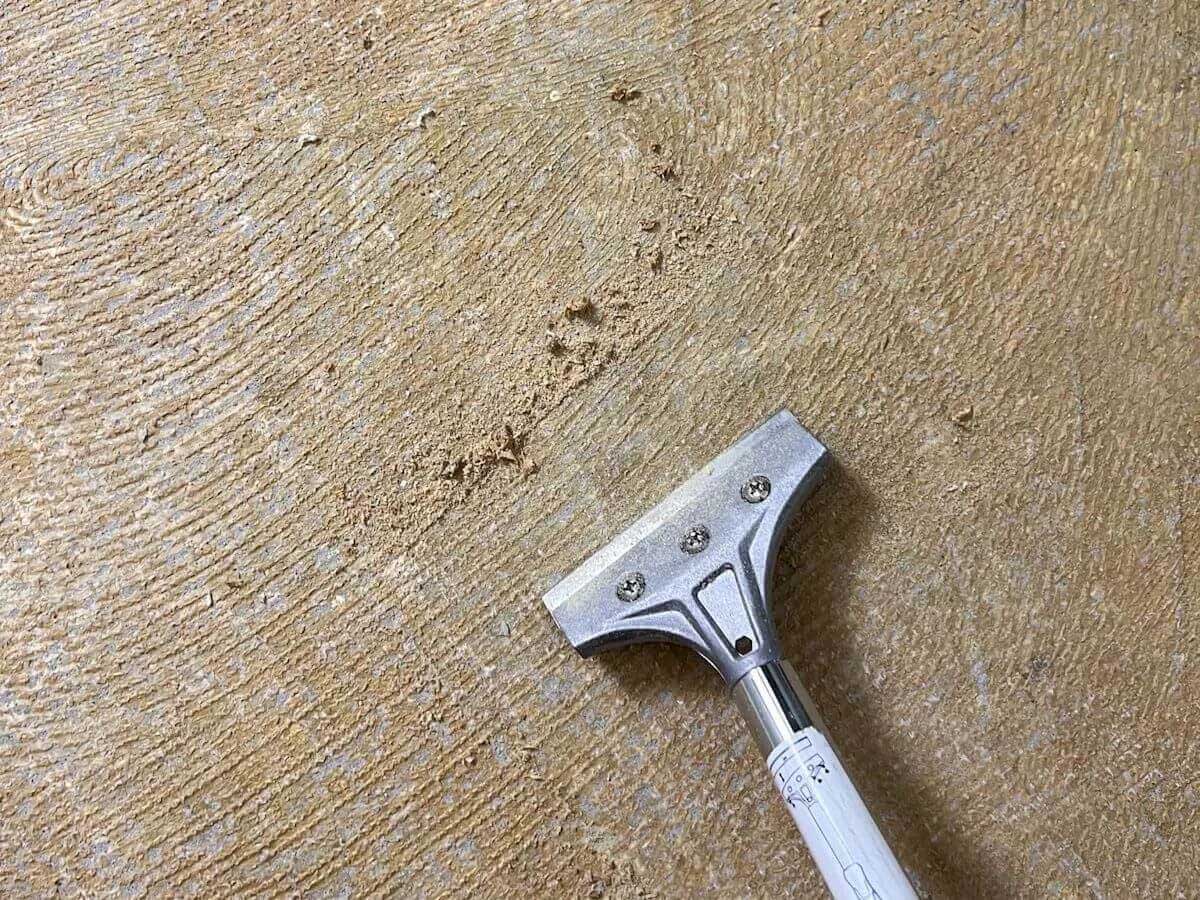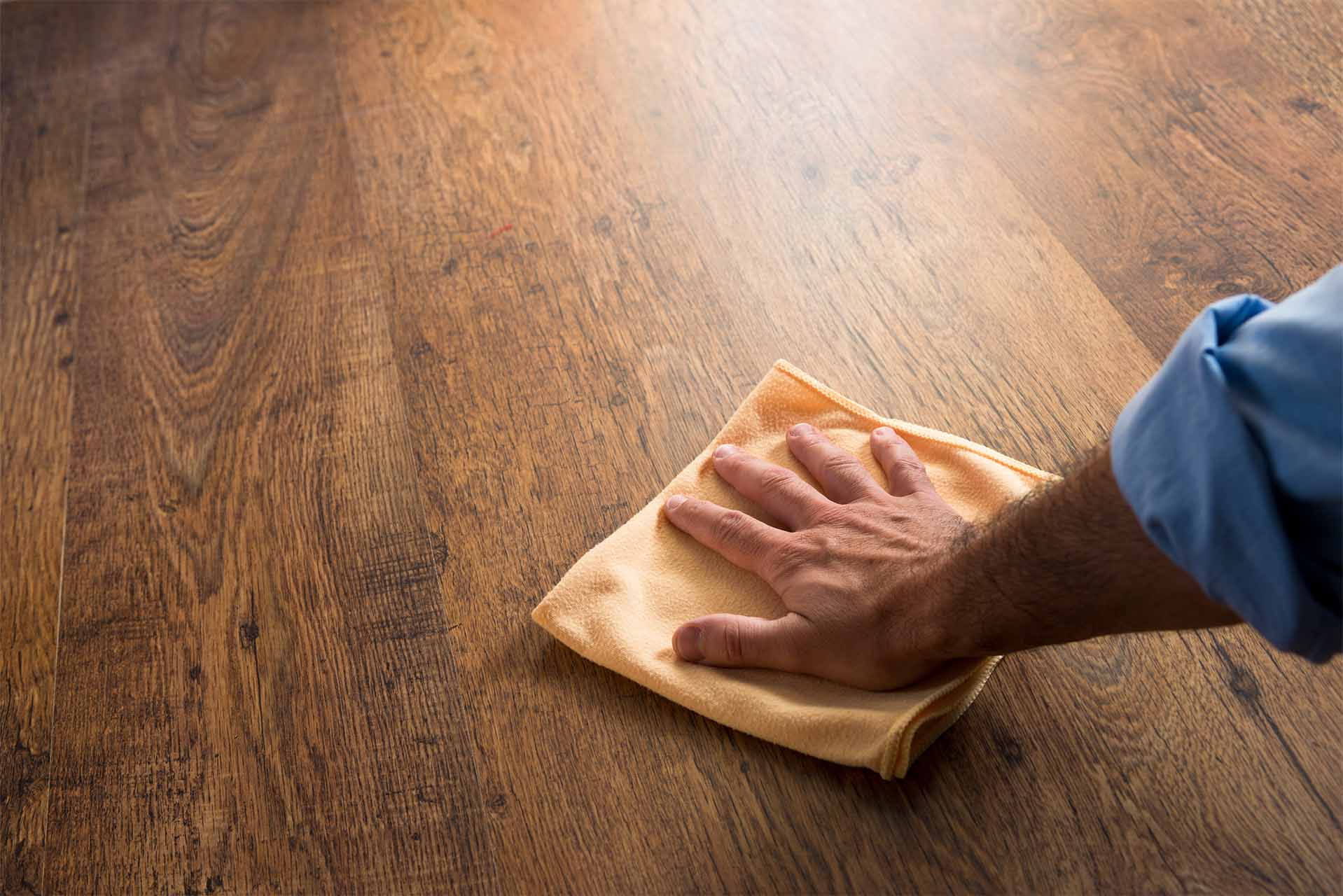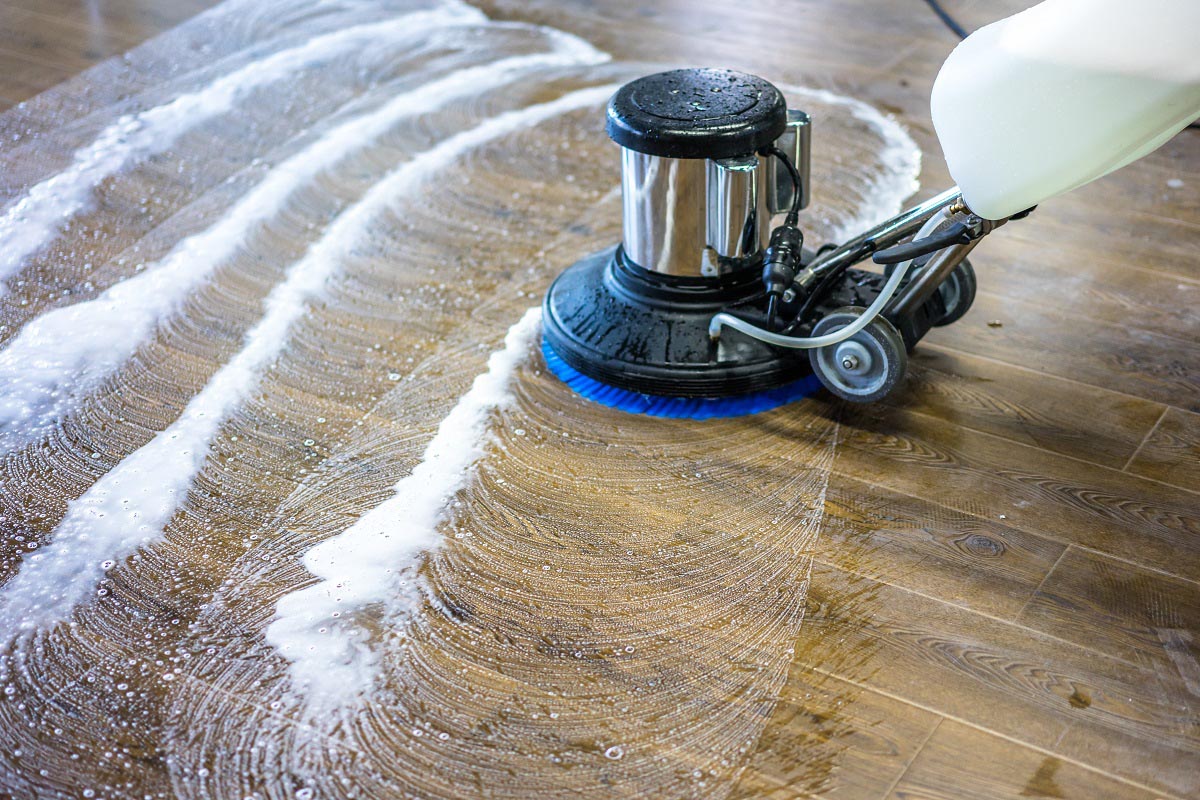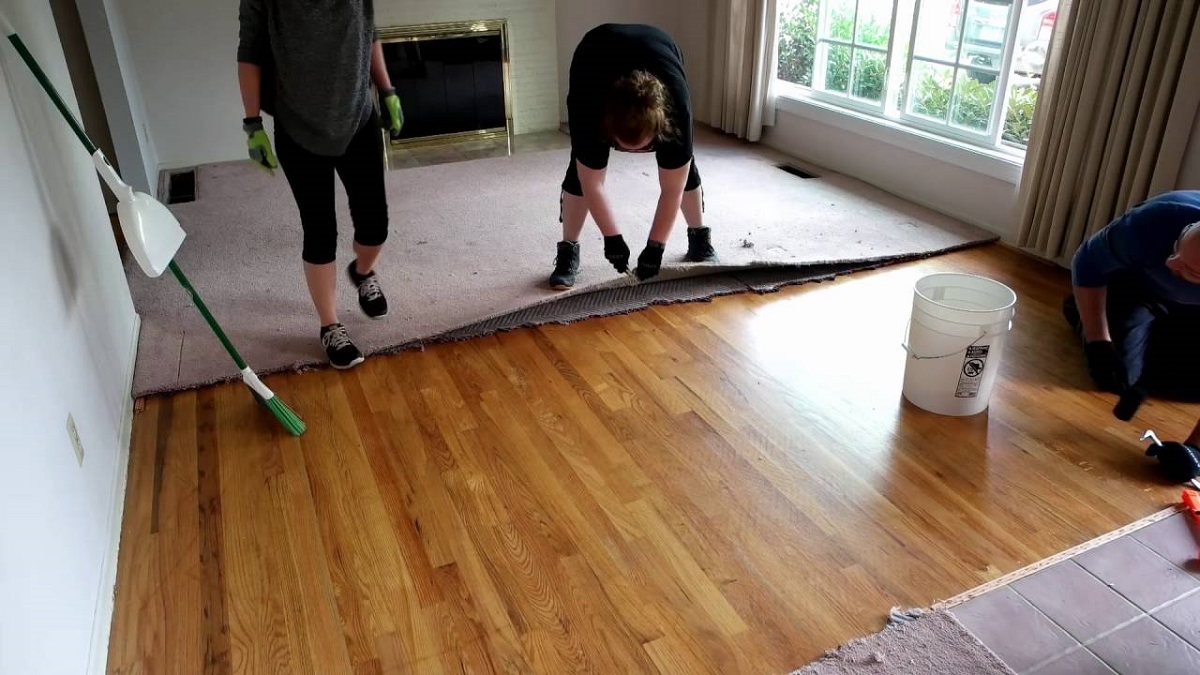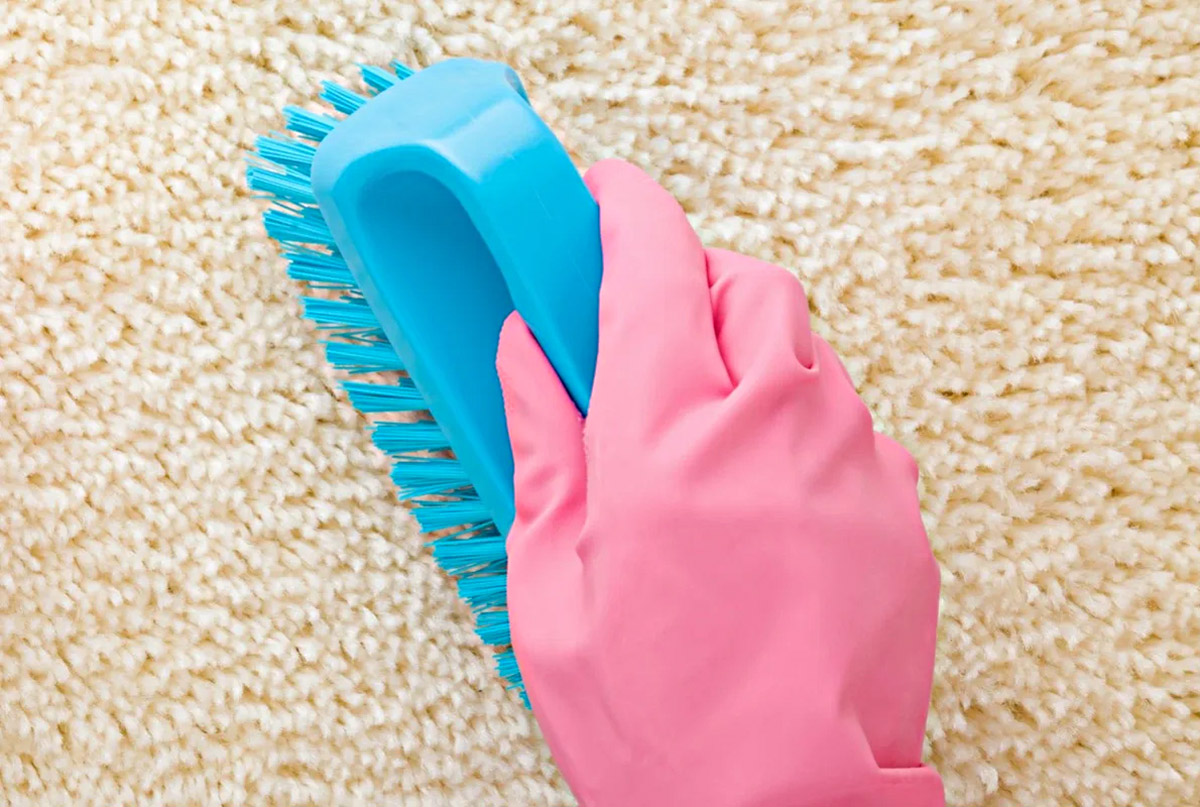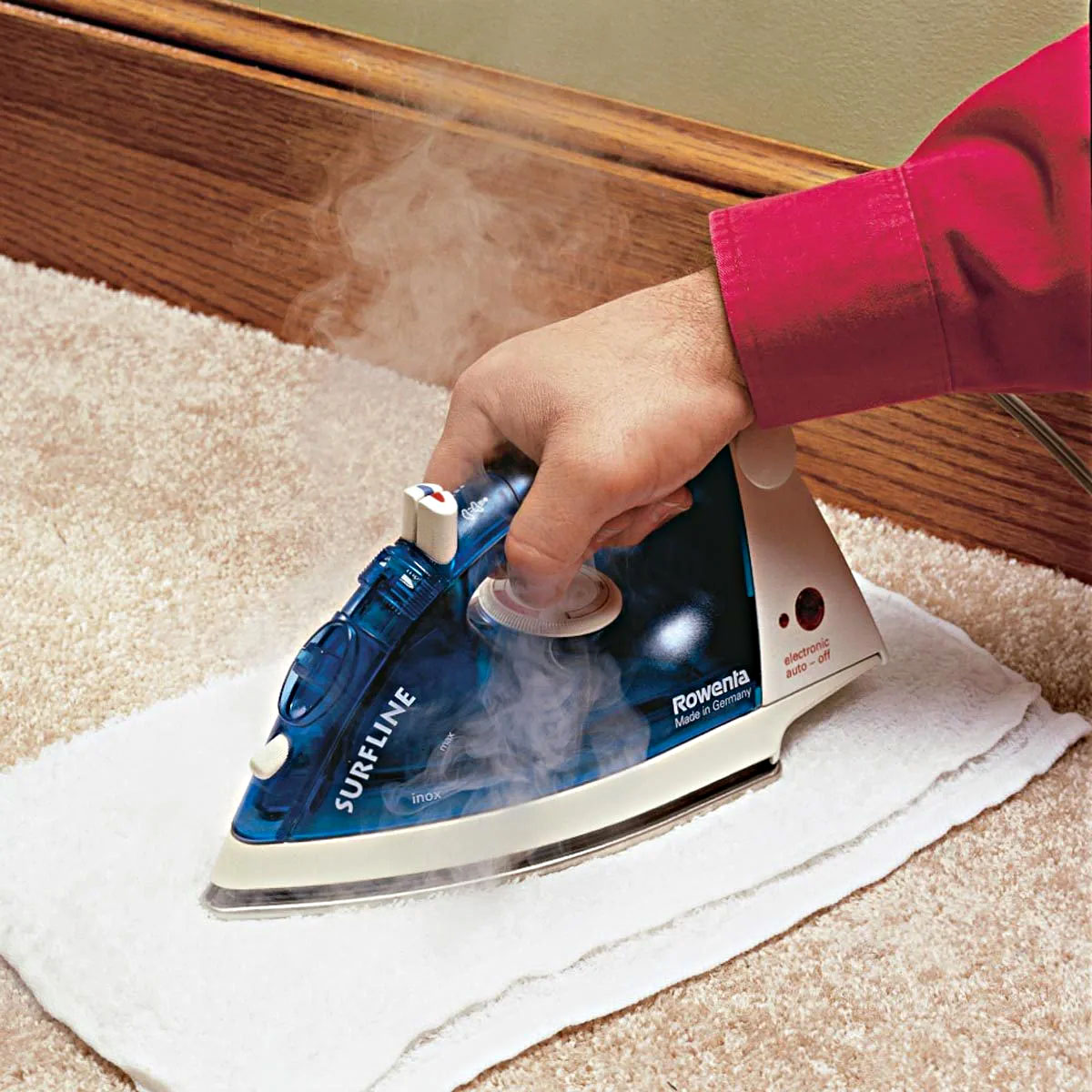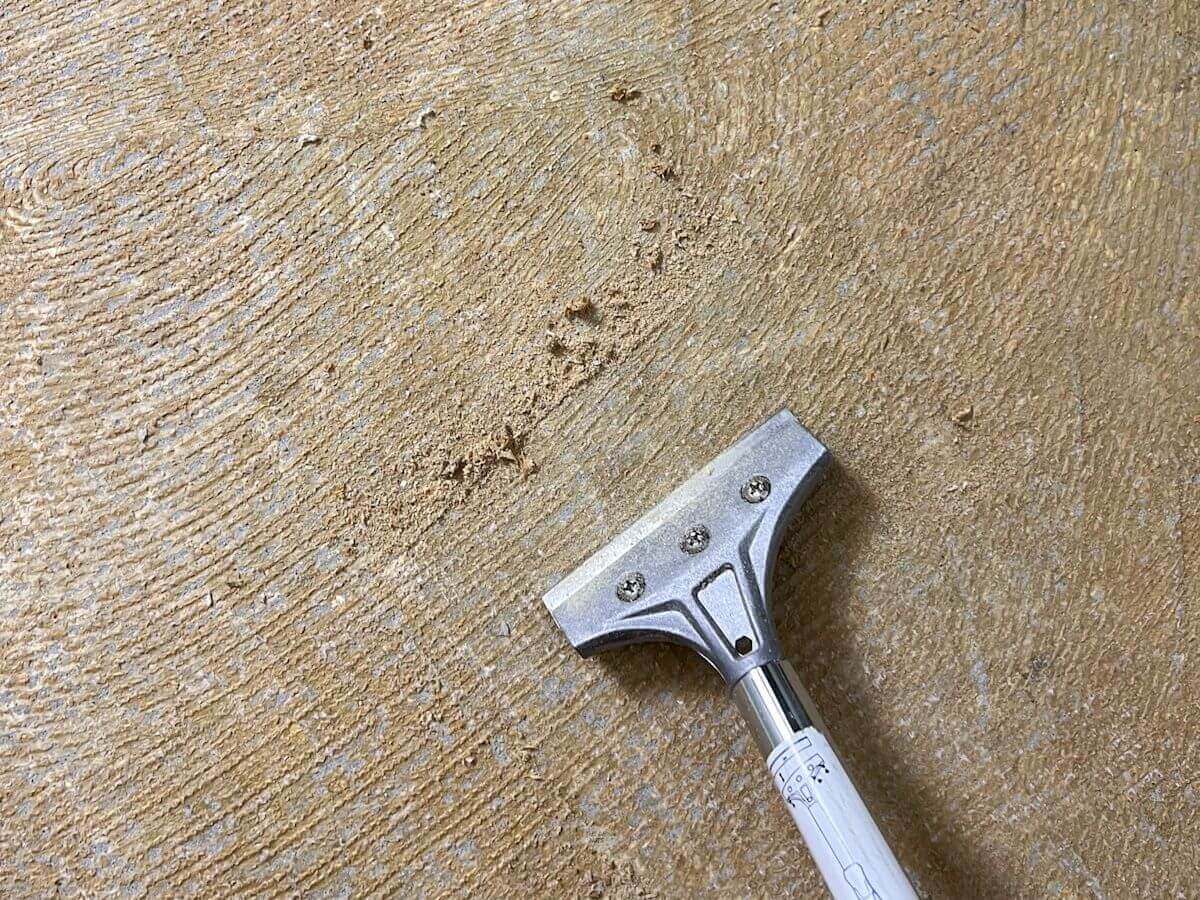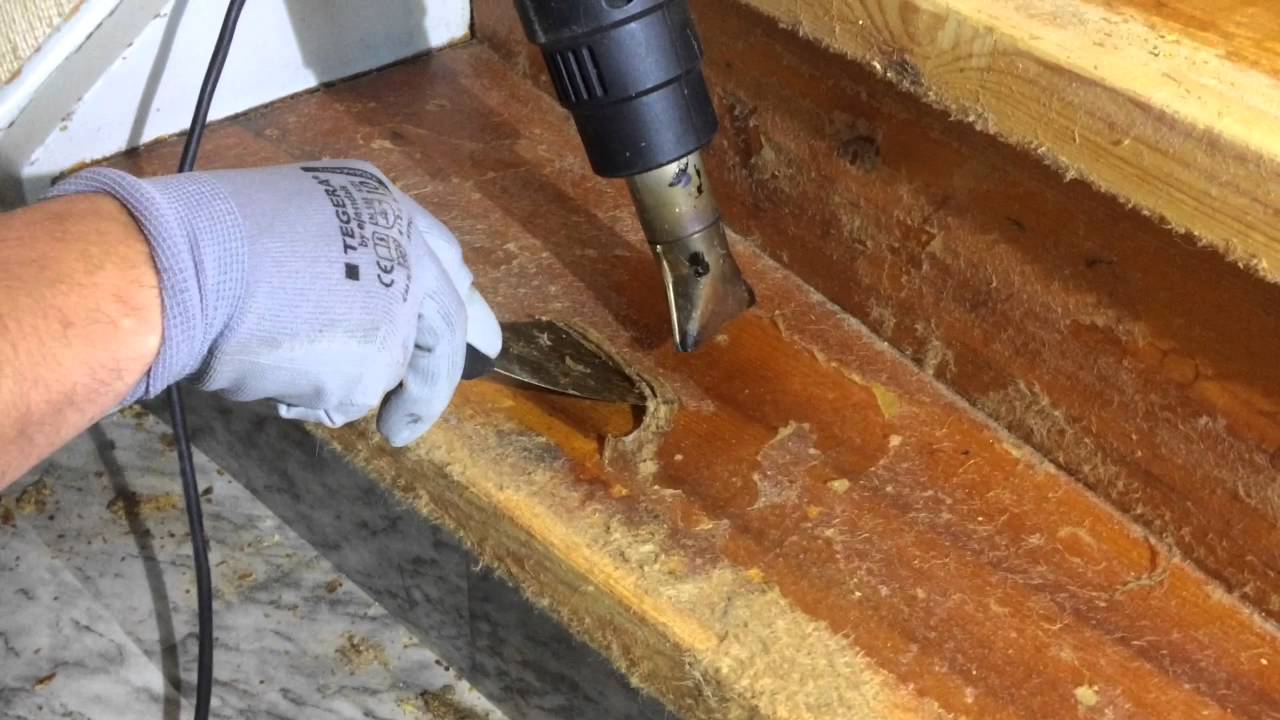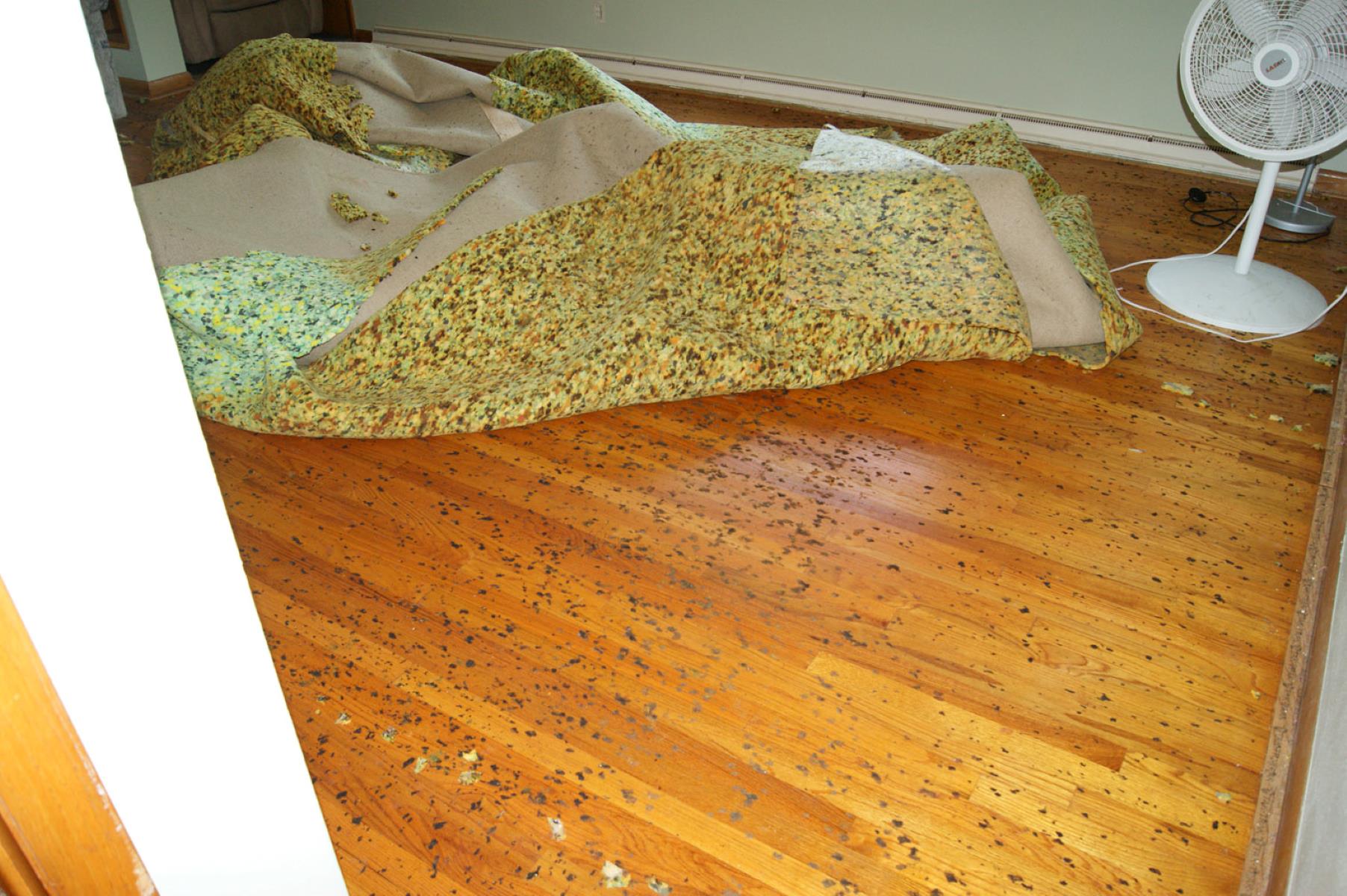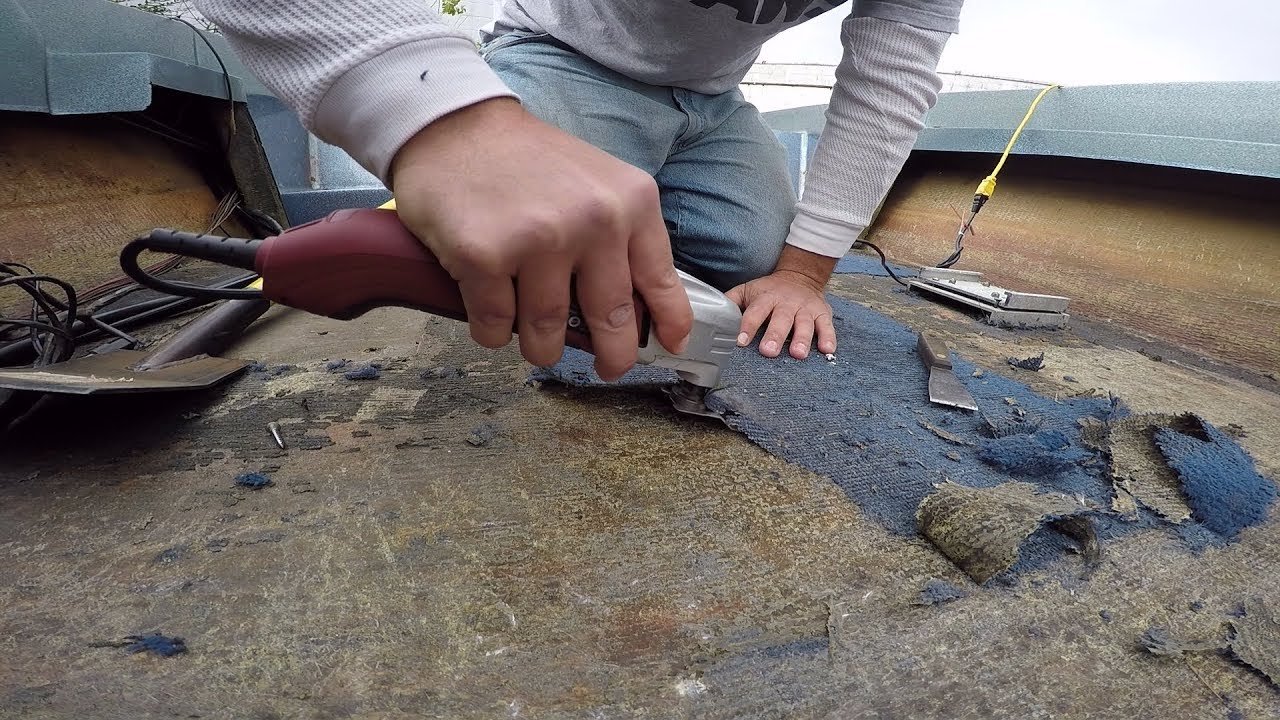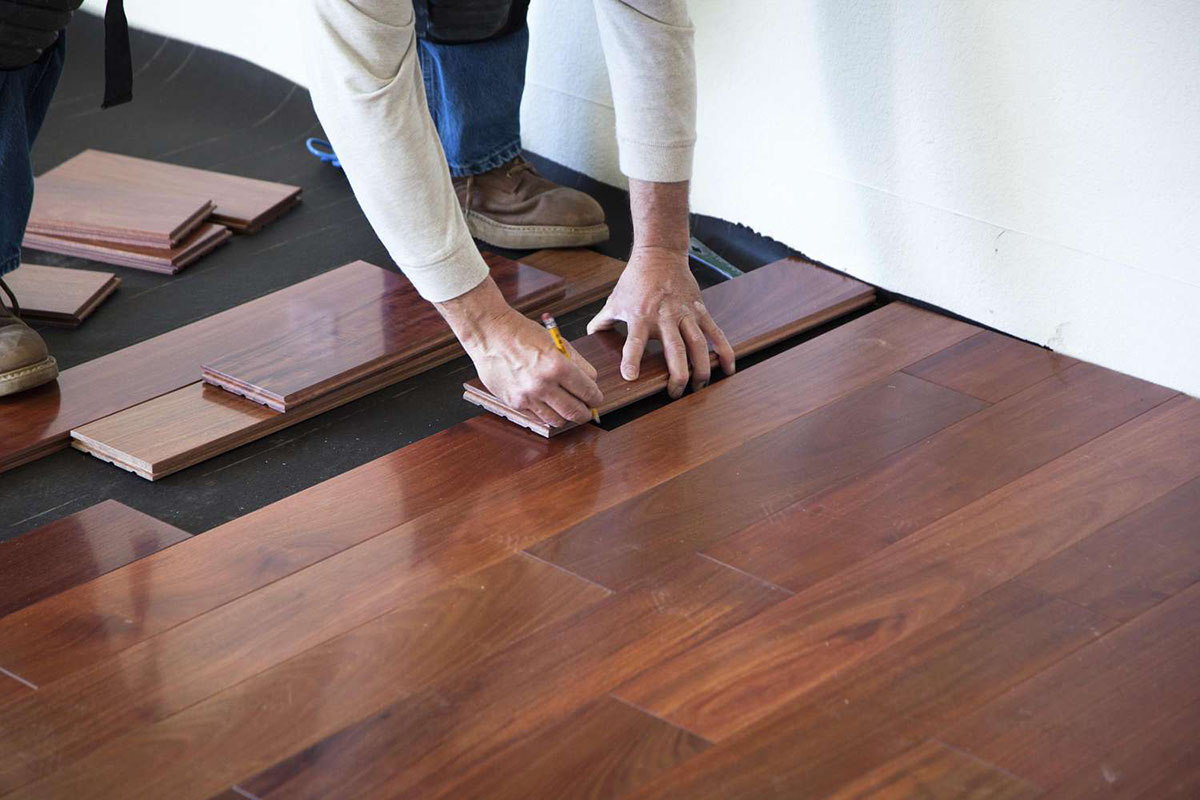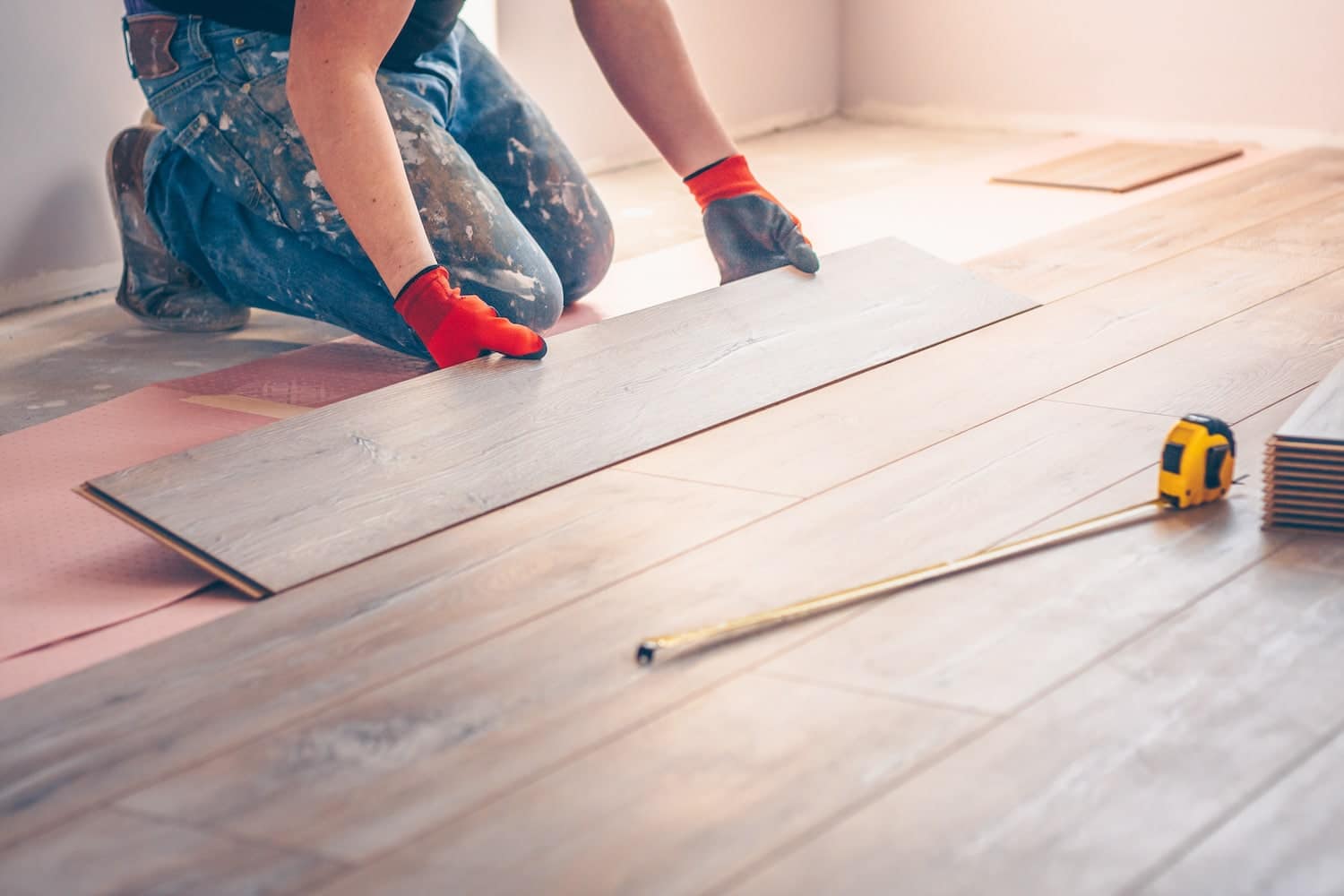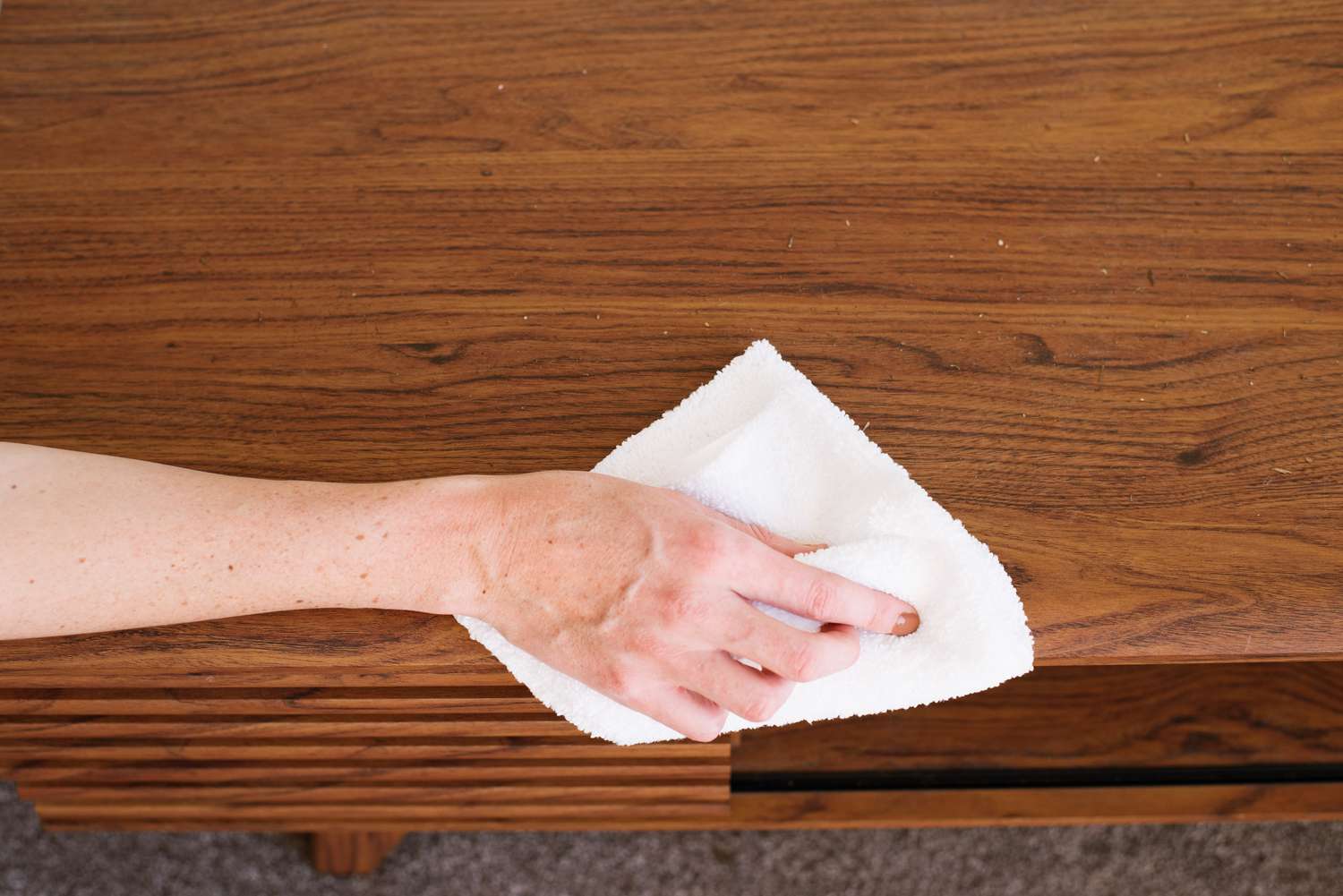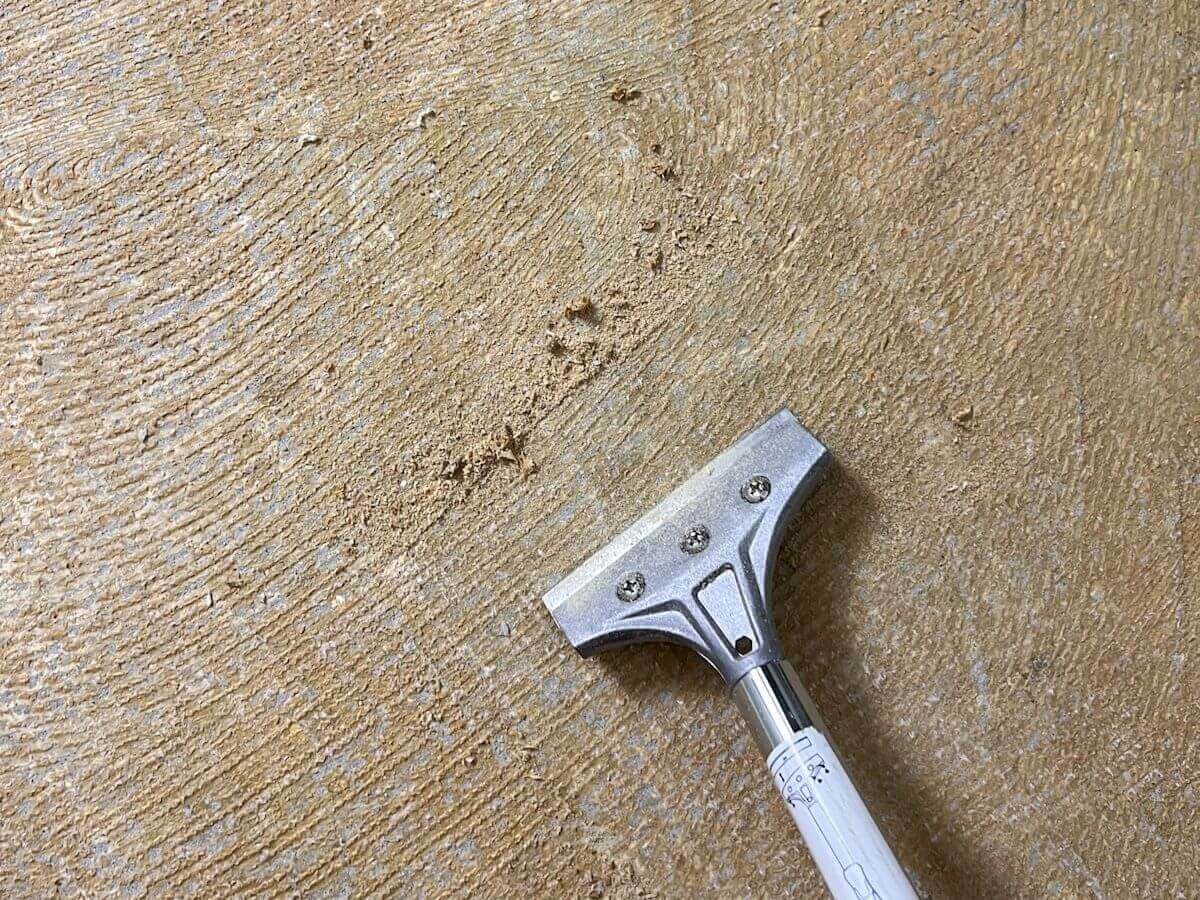Home>Articles>How To Remove Carpet Glue From Hardwood Floors
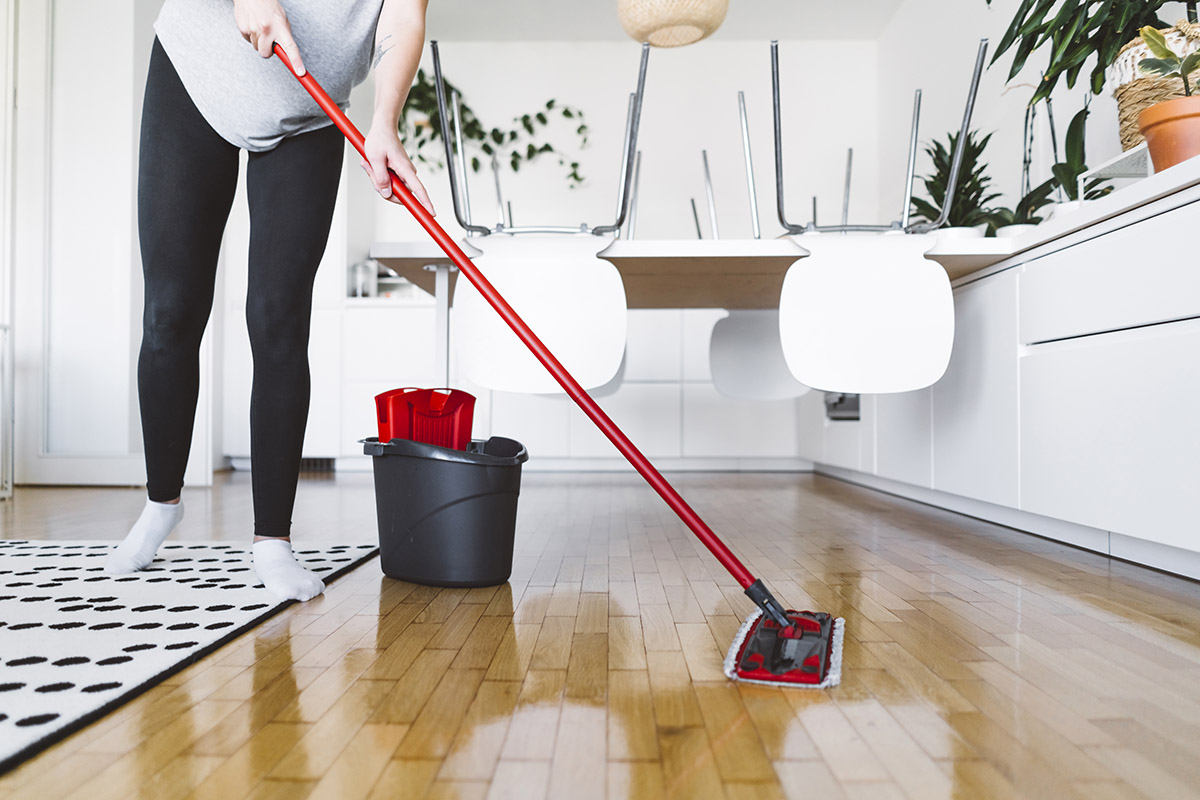

Articles
How To Remove Carpet Glue From Hardwood Floors
Published: December 7, 2023
Learn effective methods and techniques to safely remove carpet glue from hardwood floors in this informative article.
(Many of the links in this article redirect to a specific reviewed product. Your purchase of these products through affiliate links helps to generate commission for Storables.com, at no extra cost. Learn more)
Introduction
If you have recently pulled up carpeting to reveal beautiful hardwood floors underneath, you may be faced with the challenge of removing carpet glue residue. Carpet glue can leave a sticky and unsightly mess on hardwood floors, making it difficult to restore the natural beauty of the wood. However, with the right techniques and know-how, you can effectively remove carpet glue from hardwood floors and restore them to their original glory.
In this article, we will provide you with a comprehensive guide on how to remove carpet glue from hardwood floors. We will cover different methods and techniques to help you tackle this task with ease.
Before we delve into the methods, it’s important to understand the nature of carpet glue and its impact on hardwood floors. Carpet glue is typically a strong adhesive that is used to secure carpeting to subfloors. Over time, the glue can seep into the fibers of the carpet and bond with the surface of the hardwood floor. This can result in a stubborn residue that can be challenging to remove.
Removing carpet glue from hardwood floors requires careful attention and a systematic approach. It is essential to prepare the area properly and choose the right method for your specific situation. Whether you opt for heat and scraping, solvents, or sanding and refinishing, each method has its advantages and considerations.
We understand that you may be concerned about the potential damage or discoloration to your hardwood floors during the glue removal process. Rest assured, we will provide tips and precautions to minimize any potential risks and ensure a successful outcome.
Now, let’s dive into the different methods and techniques you can use to remove carpet glue from hardwood floors and bring back the lustrous beauty of your wood flooring.
Key Takeaways:
- Say goodbye to stubborn carpet glue on hardwood floors with the right techniques and precautions. Choose from heat and scraping, solvents, or sanding and refinishing to restore the natural beauty of your wood flooring.
- Prepare the area, test methods, and protect yourself to effectively remove carpet glue. Whether using heat, solvents, or sanding, patience and attention to detail are key for successful glue removal and maintaining lustrous hardwood floors.
Read more: How To Remove Glue From Hardwood Floor
Overview of Carpet Glue on Hardwood Floors
Carpet glue on hardwood floors can present a challenging situation. Over time, the glue can penetrate the surface of the wood and create a stubborn residue that is difficult to remove. This residue can be unsightly and make your hardwood floors appear dull and dirty.
There are several factors that can affect the level of difficulty in removing carpet glue from hardwood floors. These factors include the type of adhesive used, the length of time the carpet was in place, and the condition of the hardwood itself. Additionally, the method used to install the carpet can also impact the strength and adhesion of the glue.
In some cases, carpet glue can be water-based, making it easier to remove. However, if the glue is petroleum-based or a more durable adhesive, it may require more extensive techniques to fully eliminate the residue.
It’s important to note that the presence of carpet glue on your hardwood floors can also impact the overall appearance and aesthetics of the space. The residue can trap dirt and dust, making it challenging to maintain a clean and polished floor surface. Additionally, if you plan to refinish or re-stain your hardwood floors, it is crucial to remove the carpet glue to ensure a smooth and even application of the new finish.
Before you begin the glue removal process, it is essential to assess the condition of your hardwood floors. Inspect for any damage or discoloration caused by the adhesive. If you notice significant damage or discoloration, it may be necessary to consult a professional to evaluate the best course of action.
There are multiple methods and techniques that you can employ to remove carpet glue from hardwood floors. These methods include using heat and scraping, applying solvents, and sanding and refinishing. Each method has its advantages and considerations, and the appropriate choice may depend on the type and condition of your hardwood floors.
Next, we will explore each method in more detail and provide step-by-step instructions to help you effectively remove carpet glue from your hardwood floors.
Preparing for Glue Removal
Before you begin the process of removing carpet glue from hardwood floors, it is crucial to prepare the area properly. Taking the time to prepare will ensure a smoother and more successful glue removal process. Here are the steps to follow for effective preparation:
1. Clear the area: Remove any furniture, rugs, or other items from the room to create an unobstructed space for the glue removal process. This will allow you to have better access to the affected areas and work more efficiently.
2. Ventilate the room: Open windows or use fans to create proper ventilation in the room. Some glue removal methods may involve the use of solvents or heat, which can produce fumes. Ensuring adequate ventilation will help to dissipate any strong odors and improve air quality.
3. Gather the necessary tools: Depending on the method you plan to use, gather the appropriate tools and equipment. This may include a heat gun, scraper, solvents, sandpaper, protective gloves, and eye protection. Having the right tools on hand will make the glue removal process more efficient and safe.
4. Test in a small area: Before applying any solvent or heat to a larger area, it is important to test it in a small, inconspicuous area of the hardwood floor. This will allow you to observe how the wood reacts to the method and determine if any damage or discoloration occurs.
5. Protect yourself: When working with solvents or using heat, it is essential to protect yourself. Wear protective gloves to shield your hands from chemicals or hot surfaces and use eye protection to prevent any accidental splashes or debris from entering your eyes.
6. Follow safety guidelines: Always read and follow the manufacturer’s instructions and safety guidelines when using solvents or heat tools. Use them in a well-ventilated area, away from open flames, and keep them out of reach of children and pets.
7. Clean the surface: Thoroughly clean the hardwood floor surface before beginning the glue removal process. Remove any loose debris, dust, or dirt that may interfere with the effectiveness of the chosen method.
By taking these preparatory steps, you will create an ideal environment for glue removal and ensure that the process goes smoothly. Once you have completed these preparations, you can proceed with the chosen glue removal method. In the following sections, we will provide detailed instructions on three effective methods: using heat and scraping, applying solvents, and sanding and refinishing.
Method 1: Using Heat and Scraping
Using heat and scraping is a popular method for removing carpet glue from hardwood floors. This technique involves softening the adhesive with heat and then gently scraping it off the surface. Here is a step-by-step guide to using this method:
1. Gather the necessary tools: For this method, you will need a heat gun or a hair dryer, a scraper tool with a sharp blade, and a drop cloth or plastic sheet to protect the surrounding area.
2. Prepare the area: Lay down the drop cloth or plastic sheet around the area you will be working on to catch any residue or debris. This will make the cleanup process easier.
3. Apply heat: Start by heating a small section of the carpet glue using the heat gun or hair dryer. Hold the heat source a few inches away from the surface and move it back and forth to evenly distribute the heat. The heat will soften the adhesive, making it easier to scrape off.
4. Scrape the glue: Once the adhesive is heated and softened, use the scraper tool to gently scrape off the glue from the hardwood floor. Be careful not to apply too much pressure or push too hard, as this can damage the wood. Work in small sections and continue heating and scraping until all the glue is removed.
5. Clean the surface: After removing the carpet glue, use a damp cloth or mop to clean the surface of any residue or debris left behind. This will ensure a clean and smooth finish.
6. Repeat if necessary: Depending on the amount of glue and its adhesion, you may need to repeat the heating and scraping process in certain areas. Be patient and thorough to achieve the best results.
7. Dispose of waste properly: Dispose of the glue residue and any other waste material in accordance with local regulations. Some adhesives may contain chemicals that require specific disposal methods.
Using heat and scraping can be an effective method for removing carpet glue from hardwood floors. However, it is important to note that excessive heat or improper scraping techniques can damage the wood. Take your time, work carefully, and if you’re unsure, it’s always best to consult a professional.
Now that you’re familiar with the heat and scraping method, let’s explore another technique: applying solvents to remove carpet glue from hardwood floors.
Use a floor scraper to gently scrape off the carpet glue from the hardwood floor. Apply a commercial adhesive remover and let it sit for a few minutes before wiping it off with a clean cloth. Repeat as necessary until the glue is completely removed.
Method 2: Applying Solvents
Applying solvents is another effective method for removing carpet glue from hardwood floors. Solvents help to dissolve the adhesive, making it easier to wipe or scrape away. Here is a step-by-step guide on how to use solvents to remove carpet glue:
1. Choose the right solvent: There are several solvents available that can effectively dissolve carpet glue. Common options include acetone, mineral spirits, or adhesive removers specifically designed for this purpose. Choose a solvent that is compatible with your hardwood floors and follow the manufacturer’s instructions.
2. Test the solvent: Before applying the solvent to a larger area, test it in a small, inconspicuous spot on the hardwood floor. This will allow you to observe any adverse reactions or discoloration that may occur.
3. Apply the solvent: Pour a small amount of the solvent onto a clean cloth or sponge and gently dab it onto the carpet glue. Avoid saturating the wood with the solvent, as excessive moisture can damage the hardwood floors. Allow the solvent to sit on the glue for a few minutes, giving it time to dissolve the adhesive.
4. Remove the glue: After the solvent has had time to work, use a scraper tool or a clean cloth to gently remove the softened glue. Wipe in a circular motion to lift the adhesive from the surface. If necessary, reapply the solvent and repeat the process until all the glue is removed.
5. Clean the surface: Once the glue is removed, wipe down the hardwood floor with a clean cloth dampened in warm water to remove any remaining solvent residue. This will help to prevent any lingering chemical odors or residue on the surface.
6. Allow the floor to dry: Give the hardwood floor sufficient time to dry completely before walking on it or replacing any furniture. This will prevent any moisture damage and ensure a smooth finish.
7. Dispose of waste properly: Properly dispose of any waste material, including used cloths or sponges containing solvent, in accordance with local regulations. Be mindful of any flammable or hazardous properties the solvents may have.
When using solvents, it is crucial to follow safety precautions, such as wearing protective gloves and ensuring good ventilation in the room. Additionally, be mindful that some solvents may have strong odors and should be used in a well-ventilated area.
Now that you’re familiar with the solvent method, let’s proceed to the next technique: sanding and refinishing the hardwood floors to remove carpet glue.
Method 3: Sanding and Refinishing
If the carpet glue on your hardwood floors is particularly stubborn or if you’re planning to refinish the floors anyway, sanding and refinishing may be the most effective method for glue removal. This technique involves sanding down the surface of the wood to remove the adhesive and then refinishing it for a fresh and restored look. Here is a step-by-step guide on how to sand and refinish your hardwood floors to remove carpet glue:
1. Gather the necessary equipment: To sand and refinish your hardwood floors, you will need a drum sander, a floor buffer, various grits of sandpaper (ranging from coarse to fine), a shop vacuum, a clean cloth, and the appropriate floor finish and applicator.
2. Prepare the area: Clear the room of furniture and cover any vents or openings to minimize the spread of dust. It’s also a good idea to seal off adjacent rooms to prevent dust from traveling.
3. Sand the floor: Start by using a drum sander with coarse sandpaper to remove the carpet glue and any surface imperfections. Work in small sections, moving the sander in a back-and-forth motion, following the direction of the wood grain. Take care not to sand too aggressively to avoid damaging the wood. Gradually switch to finer grit sandpaper to achieve a smooth and even surface.
4. Vacuum thoroughly: After sanding each section, use a shop vacuum to remove the dust and debris. Be thorough in your cleaning to ensure a clean and smooth surface for refinishing.
5. Apply the floor finish: Once the floor is sanded and clean, apply the desired floor finish according to the manufacturer’s instructions. Use a clean applicator or brush to apply the finish evenly, working in small sections. Allow the finish to dry completely before proceeding.
6. Repeat the process if necessary: Depending on the amount of carpet glue and the condition of the wood, you may need to repeat the sanding and refinishing process in certain areas to ensure all the glue is removed.
7. Clean up: Once the finish is dry, clean up any remaining dust or debris from the sanding process. Dispose of waste materials, such as used sandpaper and dust, appropriately and in accordance with local regulations.
Keep in mind that sanding and refinishing hardwood floors can be a time-consuming and labor-intensive process. It may also require some level of expertise to achieve the desired results. If you’re unsure or uncomfortable with DIY refinishing, consider hiring a professional floor refinisher to ensure a high-quality and flawless finish.
Now that you have a comprehensive understanding of the three methods for removing carpet glue from hardwood floors, you can choose the approach that best suits your needs and the condition of your floors.
Tips and Precautions
When removing carpet glue from hardwood floors, it’s important to keep the following tips and precautions in mind to ensure a successful and safe process:
1. Patience is key: Removing carpet glue can be a time-consuming task. Take your time and work in small sections, ensuring that you effectively remove the glue without causing any damage to the hardwood floors.
2. Test in small areas: Before applying any solvents, heat, or sanding techniques to larger areas, always test them in a small, inconspicuous spot. This will help you determine the effectiveness of the method and evaluate any potential damage or discoloration.
3. Protect yourself: When using solvents or applying heat, protect yourself by wearing gloves and eye protection. Ventilate the room properly by opening windows or using fans to minimize fumes and enhance air circulation.
4. Choose the right method: Consider the condition of your hardwood floors and the level of adhesive residue when choosing the most suitable method. Heat and scraping, solvents, or sanding and refinishing may be more or less effective depending on the specific situation.
5. Follow manufacturer instructions: Always read and follow the instructions provided by the manufacturer of any solvents or adhesive removers you plan to use. Use them in the recommended quantities and follow the safety guidelines to prevent any accidents or damage.
6. Protect surrounding areas: When applying solvents or sanding, use drop cloths or plastic sheets to protect the surrounding areas and furniture from any potential damage or residue.
7. Seek professional help if needed: If you’re unsure about tackling the glue removal process on your own or if you’re dealing with extensive damage, it’s best to consult with a professional floor refinisher or contractor who has experience in handling hardwood floors.
8. Clean the surface thoroughly: After removing the carpet glue, make sure to clean the hardwood floors thoroughly to remove any residue or debris. This will prepare the surface for refinishing or further treatments.
9. Regular maintenance: Once you’ve successfully removed the carpet glue, establish a regular cleaning and maintenance routine for your hardwood floors. Wipe spills promptly, use appropriate cleaning products, and apply protective coatings to keep your floors looking their best.
By following these tips and precautions, you can navigate the glue removal process with confidence and achieve excellent results, restoring the beauty of your hardwood floors.
Now that we’ve covered tips and precautions, let’s wrap up this article.
Conclusion
Removing carpet glue from hardwood floors may seem like a daunting task, but with the right techniques and precautions, you can successfully restore the natural beauty of your wood flooring. Whether you choose to use heat and scraping, solvents, or sanding and refinishing, each method has its advantages and considerations.
Before embarking on the glue removal process, it is crucial to properly prepare the area, gather the necessary tools, and consider the condition of your hardwood floors. Take the time to test any solvents or methods in small, inconspicuous areas to avoid potential damage or discoloration.
Method 1, using heat and scraping, involves softening the adhesive with heat and gently scraping it off the surface. Method 2, applying solvents, helps dissolve the glue for easier removal. Method 3, sanding and refinishing, is an effective option for stubborn glue or when you plan to refinish the floors anyway.
Throughout the process, be patient, follow safety guidelines, protect yourself with gloves and eye protection, and properly ventilate the area. Take the necessary precautions to protect surrounding areas and clean the surface thoroughly after glue removal.
Remember to maintain your hardwood floors with regular cleaning and protective measures to keep them looking their best for years to come.
In conclusion, removing carpet glue from hardwood floors requires careful preparation, the right tools, and a systematic approach. With the methods and tips outlined in this article, you can successfully restore the natural beauty of your hardwood floors and enjoy a clean and polished living space.
So go ahead, tackle the challenge, and say goodbye to that sticky residue. Your hardwood floors will thank you.
Frequently Asked Questions about How To Remove Carpet Glue From Hardwood Floors
Was this page helpful?
At Storables.com, we guarantee accurate and reliable information. Our content, validated by Expert Board Contributors, is crafted following stringent Editorial Policies. We're committed to providing you with well-researched, expert-backed insights for all your informational needs.
